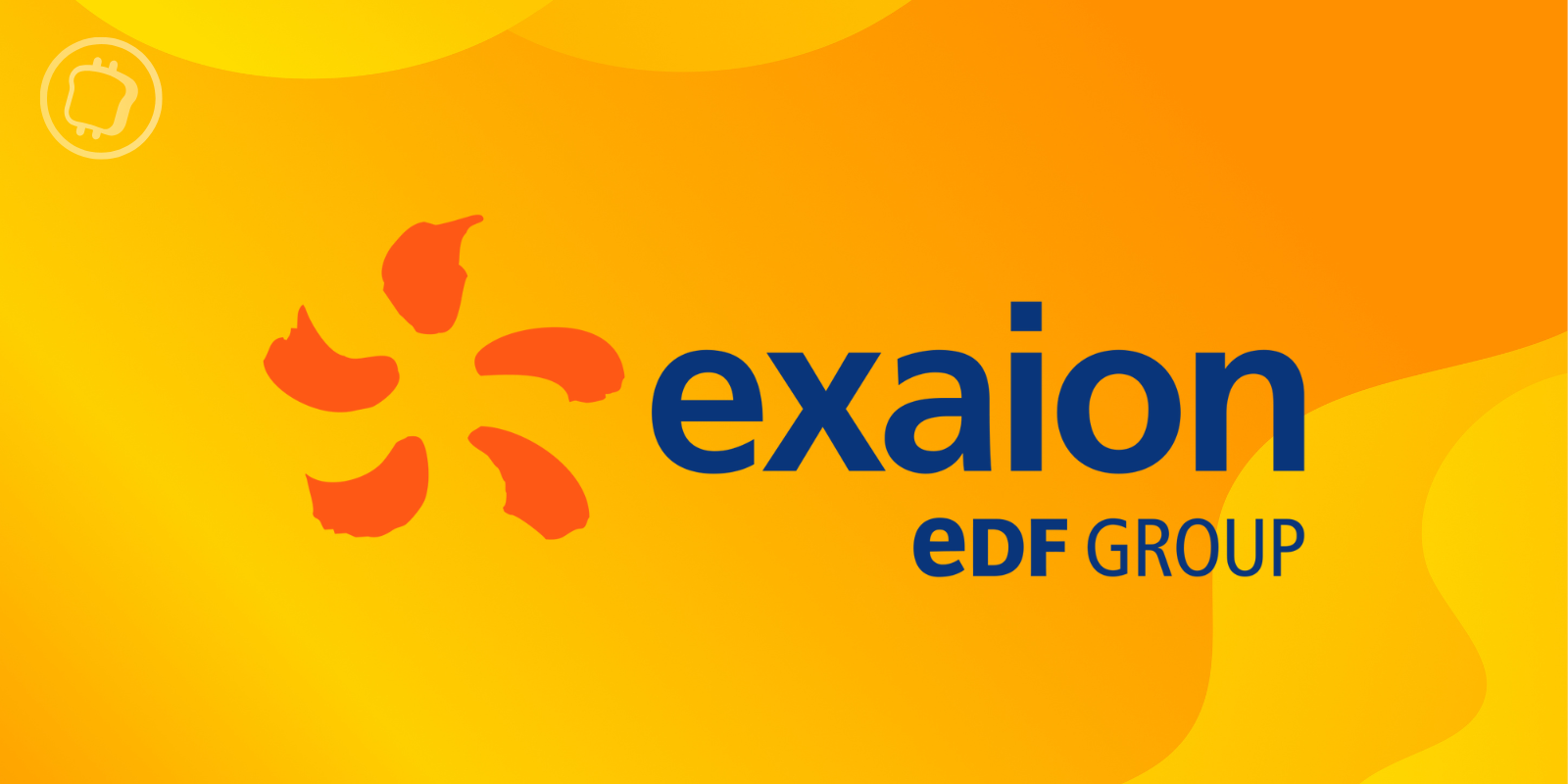Pectra is an update of the Ethereum blockchain which will be deployed in April 2025 on the Mainnet. With a large number of improvements, it represents one of the most important Ethereum updates in recent years. Find out what are the changes made by the Pectra update.
What is Pectra update?
Pectra is an important update of the Ethereum blockchain planned to be deployed in April 2025 on the Mainnet.
Born from the merger of Prague and Electra updates, Pectra brings various improvements to the two main layers of Ethereum: the execution layer and the consensus layer. Due to the major changes it brings, Pectra implies a hard fork of the Ethereum blockchain when it is deployed.
The Pectra update aims to improve the Ethereum blockchain on:
- User experience;
- The experience of developers;
- Scalability;
- Security.
To improve these different elements, the Pectra update consists of 11 Ethereum improvation proposition (EIP), which makes it the most important update of the Ethereum blockchain of recent years.
Do not miss the Bullrun, join our experts on Cryptoast Academy
Advertisement
What are the EIPs included in the Pectra update?
The Pectra update is based on several major EIPs as well as some minor EIPs. Here are all the EIPs of this update and the changes they will bring to the Ethereum blockchain.

EIP-7702: Introduction of account abstraction
The EIP-7702 aims to introduce the concept of account abstraction within the Ethereum blockchain.
The purpose of this concept aims to extend the features of the wallets (technically called external Owned accounts) by offering them the possibility of behaving like a smart contract for a transaction on Ethereum.
This process makes wallets compatible with Ethereum blockchain programmable, opening the way to many possibilities such as:
- Sign a transaction lot in one;
- Pay the transaction fees with the token of his choice, and no longer only with the ETH;
- Pay the transaction fees for another account (sponsorization);
- Define Wallet recovery mechanisms.
This EIP of Pectra is part of a more general approach to simplify the user experience within Ethereum, already engaged with the creation of the ERC-4337 in 2023, a type of smart contract usable as Wallet and ensuring increased programmability.
EIP-7251: Increase in the maximum threshold of ETH for a validator
The EIP-7251 offers to increase the maximum balance of ETH Stakés by Ethereum validator to 2048 ETH, against 32 ETH currently.
Today, a validator on Ethereum must stake an exact amount of 32 ETH to be able to secure the network and collect yields. By increasing the maximum threshold of Eth Stakés, it will be possible to stike a flexible amount between 32 and 2048 ETH by validator of the Ethereum blockchain.
This mechanism allows in particular one:
- Decrease in “redundant validators”designating validators held by a single entity, which can be grouped into a single validator with a large number of ETH stakes, called Super-Validator;
- Optimization of yields for “solo-stakers”designating the staker who hold their own validator. Solo-stakers will be able to benefit from the effect of composed interests by reinjecting their yield in their validator, thus optimizing their income.
This new mechanism introduced by Pectra facilitates the management of validators for large organizations, while maximizing the yields of solo-stakers.
EIP-7002: a more flexible withdrawal of ETH ENTOG
The EIP-7002 introduces a new ETH withdrawal mechanism placed in stations by the validators, bringing more flexibility.
Each validator of the Ethereum blockchain has two keys:
- Active keyused to sign and perform validation tasks;
- Removal keywhich holds the property of ETH stakes and awards.
Currently, only the active key can initiate a withdrawal from eth stakes. However, this can be restrictive in the event that these two keys are held by different entities (which is often the case for Liquid Staking protocols for example).
With the EIP-7002, the Pectra update wishes to extend the right to trigger withdrawals to the withdrawal key, allowing the owners of ETH Stakes to be able to remove their ETH independently.
EIP-7691: Increase in number of blobs
The EIP-7691 wishes to increase the number of blobs available in each block in order to offer more scalability to the Layer 2 of Ethereum and thus reduce transaction costs.
Introduced by the update of the proto-danksharding in 2024, the blobs are temporary storage spaces attached to each blockchain Ethereum blockchain created specially so that the Layer 2 can insert their data there. Currently, each block can contain up to 6 Blobs, with an ideal efficiency rate at 3 Blobs per blocks. However, with the multiplication of Layer 2 of Ethereum and their growing adoption, the Blobs become more and more saturated.
Through the EIP-7691, Pectra proposes to pass the maximum number of Blobs per block to 9 with an ideal efficiency rate at 6 Blobs, in order to meet the need for scalability of the Layer 2 of Ethereum.
EIP-7623: increase in the cost of Calldata
The EIP-7623 aims to increase the cost of the Calldata, a component that allows you to store data within the Ethereum blockchain.
Currently, Layer 2 d'Ethereum tip over between the Blobs and the Calldata to store their data according to the least expensive solution at an instant T. However, so as not to congest the Ethereum blockchain for its users, Layer 2 should Only use the Blobs, which are their dedicated storage space.
The Pectra update wishes to increase the cost of the Calldata for the Layer 2 to encourage them to use the Blobs to store their data, thus releasing the use of the Calldata for users of the Ethereum blockchain.
EIP-7685: Improvement of communication within Ethereum blockchain
The EIP-7685 proposes to establish a general means of communication between the execution layer and the consensus layer of the Ethereum blockchain.
Currently, on Ethereum blockchain, certain behaviors of the execution layer require intermediaries (such as oracles) to access certain information on the consensus layer. This mechanism complicates the accessibility of certain data.
With the EIP-7685, Pectra will allow smart contracts on the execution layer to communicate directly with the consensus layer, deleting the need for intermediaries.
Do not miss the Bullrun, join our experts on Cryptoast Academy
Advertisement
The other EIPs of the Pectra update
Pectra update has 5 other EIPs providing various more technical improvements to Ethereum:
| Eip | Improvement | Objective |
| EIP-2537 | Adding operations on BLS12-381 curves | Improve the effectiveness of cryptographic calculations |
| EIP-2935 | Store the hash from 8192 previous blocks | Stateless execution, or without state |
| EIP-6110 | Provide a list of on-chain validators' deposits | Treat the validators' deposits on the consensus layer |
| EIP-7549 | Displacement of the field ” index Apart from the signed certificate message | Aggregate equal consensus votes |
| EIP-7840 | Addition of the object ” blobschedule »To Ethereum customers | Ensure better management of blobs in each block |
What will be the impacts of Pectra on the Ethereum network?
The Pectra update brings major changes to Ethereum on several levels.
First, the user experience will be improved with a reduction in Layer 2 transaction costs thanks to the increase in the number of Blobs per block. In addition, the introduction of account abstraction allows wallets (Rabby, Metamask, Phantom, etc.) to provide programmability during interaction with blockchains compatible with Ethereum.
In a second step, Pectra relies on better internal management of the Ethereum protocol, whether for the benefit of Layer 2, validators, or developers of decentralized applications (DAPP).
With the Pectra, Ethereum update should increase the scalability of its Layer 2, improve the user experience, and optimize the management of its protocol.
What will be the next steps for Ethereum after Pectra?
The Pectra update is only a stage in the ambitious Roadmap of Ethereum. Indeed, the next Osaka-Fulu update is already scheduled for 2026 and its development has already started. To find out more about future changes in Ethereum blockchain, do not hesitate to consult our file “What is Ethereum?” ».
Do not miss the Bullrun, join our experts on Cryptoast Academy
Advertisement
The crypto newsletter n ° 1 🍞
Receive a summary of crypto news every day by email 👌
Certain links present in this article may be affiliated. This means that if you buy a product or register on a site from this article, our partner gives us a commission.
Investments in cryptocurrencies are risky. There is no guaranteed high yield, a product with high performance potential implies a high risk. This risk taking must be in line with your project, your investment horizon and your ability to lose part of this savings. Do not invest if you are not ready to lose all or part of your capital










